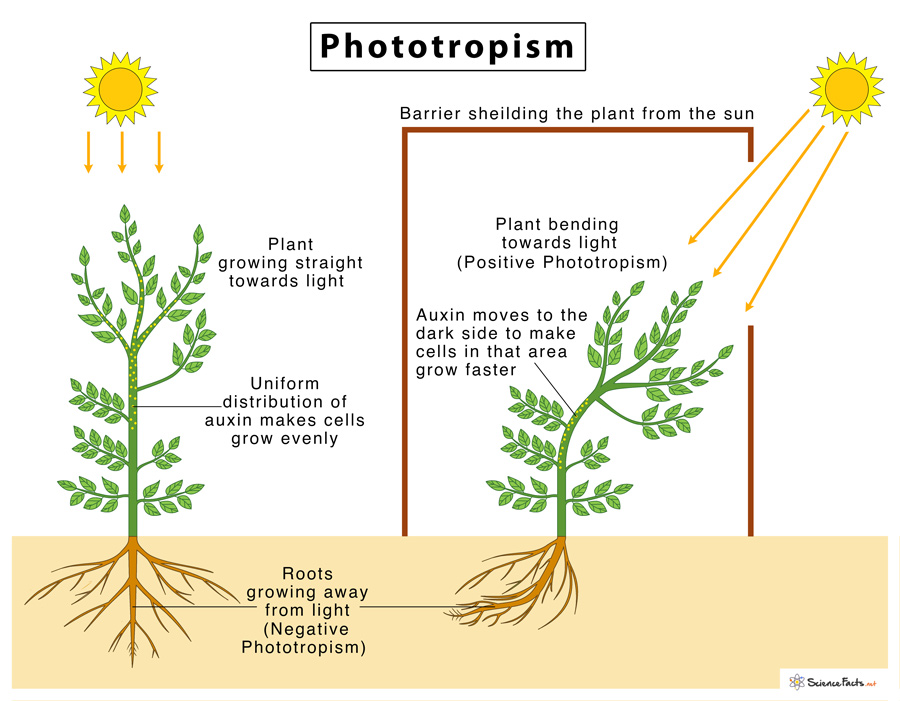In 1880, Darwin and his son Frances in their experiment described the bending of grass seedlings in the presence of light. They used newly grown plants with their shoot tips covered by a sheath called the coleoptile. Through this experiment, they found that coleoptile-covered plants did not respond to the light stimulus. In separate research involving plants where either the tip or the lower part of the coleoptile is covered, they concluded that the upper part is only capable of sensing the light response. Peter Boysen-Jensen Experiment In 1913, Danish physiologist Peter Boysen-Jensen, in a follow-up study to Darwin, showed that a chemical signal produced at the tip of the shoot in plants is responsible for the bending response of the coleoptiles in response to light. In his experiment, he removed the tip of the coleoptile and covered the cut portion with gelatin and then reinserted the tip. To his observation, he found the coleoptile to bend towards the light. On repeating the experiment using mica in place of gelatin, he discovered that the coleoptile lost its bending response. This result proved that gelatin having pore allowed a specific chemical signal to communicate between the tip and the base of the plant while mica being impermeable prevented any such communication. In another experiment, Boysen-Jensen further showed that the chemical signal travels only through the coleoptile-covered plant’s shaded side. This proved that the signal is a growth stimulator. Kenneth Thimann Experiment Later in 1933, Kenneth Thimann isolated and identified the chemical signal responsible for plant growth and movement as indole-3-acetic acid or auxin.
How Does Auxin Promote Phototropism
Auxin is the growth hormone produced at the tip of plants. The mechanism showing the role of auxin in phototropic response is described in the following steps:
Sunflower plants (Helianthus annus): Highly phototrophic. They grow towards the sun, but they can also be seen to follow the sun’s movement from east to west. Sunflower plants need more light for growth and survival, as well as for fruiting and flowering, compared to other flowering plants.Seedlings: Grow vertically upwards when the amount of light is the same on all sides. However, when the light is not evenly distributed, the seedling tends to bend in the direction of light.Fungi (Genus Pilobolus): Feed and survive on dead and decaying matter. Pilobolus crystallinus (commonly known as the ‘hat-thrower fungus’) uses phototropism to disperse their spores in the vegetation where herbivores consume them.
Negative Phototropism
The plant roots growing downwards and away from the light source shows negative phototropism
